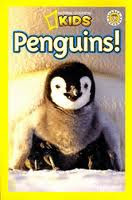Beginning on Paper
on paper
I write it
on rain
I write it
on stones
on my boots
on trees
I write it
on the air
on the city
how pretty
I write my name
-Ruth Krauss
I love this poem because it captures the excitement a
child feels when she first learns to write her name. The other day, one of my colleagues commented
that she could teach any child to read using his or her name. It sounds ridiculous, but it’s a trick
teachers have been using for years. The
first letter most children learn is the first letter of their name, and the
first word they learn to read and write is their own name, followed quickly by
Mommy and Daddy. These words are
powerful because they’re meaningful to our children. There are some things we can do at home to
help any emergent reader, whether they are very young or school aged.
 First, I recommend wall decals or signs that spell your
child’s name. Pottery Barn Kids actually
has a personalization shop, where you can get everything from a mirror to an
arm chair with your child’s name on it, for a price. I just googled “name wall decals,” and found
4 websites that sell personalized wall decals for much less than Pottery Barn
prices. My sister hung a “Bella” decal
on my niece’s nursery wall, and she noticed it before she could talk. She would point to her name and say,
“ooh.” And we’d say, “That’s says Bella,
B-E-L-L-A.”
First, I recommend wall decals or signs that spell your
child’s name. Pottery Barn Kids actually
has a personalization shop, where you can get everything from a mirror to an
arm chair with your child’s name on it, for a price. I just googled “name wall decals,” and found
4 websites that sell personalized wall decals for much less than Pottery Barn
prices. My sister hung a “Bella” decal
on my niece’s nursery wall, and she noticed it before she could talk. She would point to her name and say,
“ooh.” And we’d say, “That’s says Bella,
B-E-L-L-A.”  You can also sing your child’s name. Any five or ten letter word can be sung to
the tune of Bingo, so if your child’s name is Colin you sing, “There was a boy
who had a name and Colin was his name-o, C-O-L-I-N . . .” If his name is Kristopher, you sing K-R-I-S-T
for the first bingo and O-P-H-E-R for the second. Three or six letter names can be sung to
Jingle Bells. “S-A-M, S-A-M, Sam is my
name, S-A-M, S-A-M, Sam is my name-hey!”
Four letter names work best with YMCA and for seven letters, you should
sing “She’ll Be Coming Round the Mountain.” Eight letters gets “We Wish You a
Merry Christmas,” and nine letters uses “I’m a Little Teapot.” For eleven and
twelve, we sing “If You’re Happy and You Know It” and “Ten Little Indians,”
respectively. Your child will think it
is her own personal song.
You can also sing your child’s name. Any five or ten letter word can be sung to
the tune of Bingo, so if your child’s name is Colin you sing, “There was a boy
who had a name and Colin was his name-o, C-O-L-I-N . . .” If his name is Kristopher, you sing K-R-I-S-T
for the first bingo and O-P-H-E-R for the second. Three or six letter names can be sung to
Jingle Bells. “S-A-M, S-A-M, Sam is my
name, S-A-M, S-A-M, Sam is my name-hey!”
Four letter names work best with YMCA and for seven letters, you should
sing “She’ll Be Coming Round the Mountain.” Eight letters gets “We Wish You a
Merry Christmas,” and nine letters uses “I’m a Little Teapot.” For eleven and
twelve, we sing “If You’re Happy and You Know It” and “Ten Little Indians,”
respectively. Your child will think it
is her own personal song.  If you’ve chosen to name your child Olivia, George or Lilly,
you can find books with those characters in them, and it’s very motivating to
read a book with your name in it. As an
adult, I once read an entire trilogy of mediocre books, because the main
character’s name was Kristin. My niece
has a series of books about two little poodles named Bella and Rosie. She loves them. If your child’s name is not one commonly
found in books, you can make your own. I
like Shutterfly, if you want something that looks professional, but in school
we print them from Word. You take a
picture of your child doing several common activities, insert them into Word,
and then you type the text under the picture.
“
If you’ve chosen to name your child Olivia, George or Lilly,
you can find books with those characters in them, and it’s very motivating to
read a book with your name in it. As an
adult, I once read an entire trilogy of mediocre books, because the main
character’s name was Kristin. My niece
has a series of books about two little poodles named Bella and Rosie. She loves them. If your child’s name is not one commonly
found in books, you can make your own. I
like Shutterfly, if you want something that looks professional, but in school
we print them from Word. You take a
picture of your child doing several common activities, insert them into Word,
and then you type the text under the picture.
“
Lilly’s Purple Plastic Purse by Kevin Henkes
Harold and the Purple Crayon by Crockett Johnson
Olivia by Ian Falconer
Curious George by H.A. Rey
Danny and the Dinosaur by Syd Hoff
Arthur’s Eyes by Marc Brown
Peter’s Chair by Ezra Jack Keats
Henry and Mudge by Cynthia Rylant
Bella and Rosie by Michele Dufresne
Harriet the Spy by Louise Fitzhugh
Ella Enchanted by Gail Carson Levine
Esperanza Rising by Pam Munoz Ryan
Jake and Lily by Jerry Spinelli






















